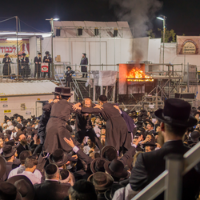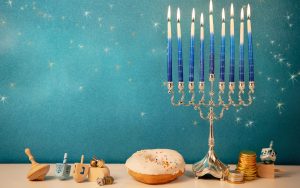Every year on Lag B’Omer, Israeli children and adults alike create massive bonfires with friends and family to celebrate this minor religious holiday. Some create a bonfire for the fun of it while others light a fire for the mystic connection, but either way, Lag B’Omer is a day of fun and celebration. Lag B’Omer marks the 33rd day of the Omer, which is a counting period starting from the second day of Pesach and ends on Shavuot, but there are many reasons why this day is so joyous. This year, Lag B’Omer is on Wednesday night, and children across Israel already have their wood collected and ready.
Lag B’Omer celebrates a few things. The earliest event being remembered is the end of the plague that killed Rabbi Akiva’s, a great scholar and rabbi, students, starting on Pesach and ending on Lag B’Omer. Some say the students were speaking badly about one another, and the end result was a plague that killed all but five students, one of which became Rabbi Shimon Bar Yochai. The time between the second day of Pesach and Lag B’Omer are considered to be a period of mourning and many refrain from buying new clothing, listening to music, getting a haircut or shaving, getting married, and going out to movies and plays. Many allow for music and celebration on Israel’s Independence Day which was two weeks ago, but return to the state of mourning after the day is done. Since the students of Rabbi Akiva no longer passed away after Lag B’Omer, the mourning period is over and people resume doing all the exciting things they put on hold.
Rabbi Shimon Bar Yochai, one of Rabbi Akiva’s students that survived the plague, went on to write the Zohar, one of Kabbalah’s largest texts, and teach Kabbalah publicly. He was the first to do so, and later in his life, he actually passed away on Lag B’Omer. Rather than having it be a somber day, Rabbi Shimon Bar Yochai requested that the day of his death, Lag B’Omer, be a day full of joy and happiness. Tens of thousands of people across Israel choose to go to his tomb on the top of Mount Meron, next to Tzfat in northern Israel, to celebrate his life by sing songs of joy and feasting, giving this day a proper celebration.
The bonfires are also connected to Shimon Bar Yochai. Rabbi Shimon Bar Yochai’s teachings of Jewish mysticism gave a spiritual light to the world, so many create bonfires, a source of light, to remember this aspect. Another opinion is made for a modern day Israel, as the bonfire represents the fighting Jewish spirit, in connection to the Bar Kochva revolts against the Romans that happened from 132CE-136CE. Bonfires are also a way to bring people together, show camaraderie and simply take in the outdoors, which is also celebrated on Lag B’Omer.

Another custom is to play with toy bows and arrows, as the bow represents a rainbow. The rainbow is a symbol of G-d’s agreement with Noah to not destroy the world in a flood ever again, and some say Shimon Bar Yochai never saw a rainbow in his life because his greatness protected the Jewish people. The day has a lot of Kabbalistic traditions, but over all it is a time of celebration, whether it be attending a bonfire, going to a wedding, cutting one’s hair or even just listening to music. Enjoy your Lag B’Omer!












